8 of the best places in the world to see the Northern Lights
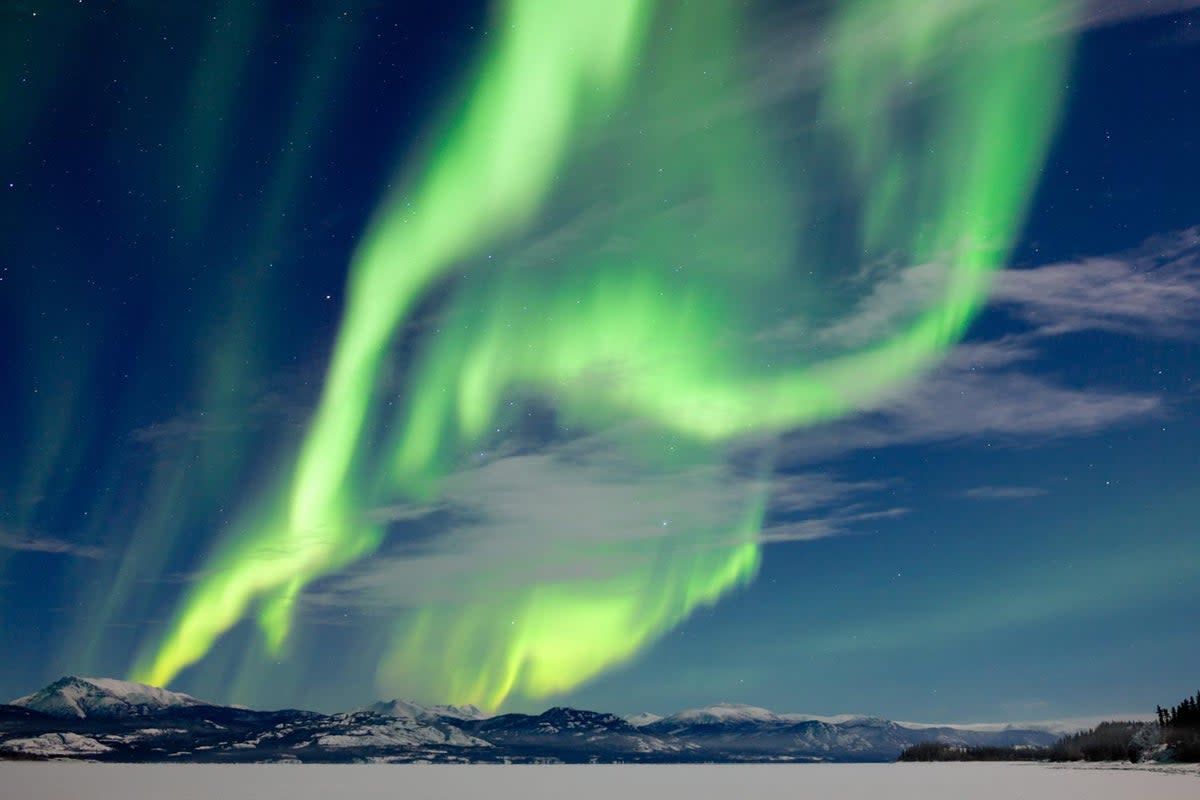
The aurora borealis – aka the Northern Lights – are one of the most magical sights on Earth.
They are created when Earth’s magnetic field interacts with charged particles from the sun, creating dancing streaks of colourful lights across the night sky.
In the Northern Hemisphere, the aurora borealis is centred around the Arctic Circle, meaning countries like Iceland, Canada, Scotland, Scandinavia, Siberia and Greenland all often experience this phenomenon. In the Southern Hemisphere, the aurora australis is mainly centred around Antarctica, but can be viewed on crisp, clear nights from the southern reaches of New Zealand and Tasmania with occasional sightings in Argentina.
Both the spring and autumn equinox mean a higher chance of spotting more impressive northern lights. This is due to the axis of the earth during each equinox, as the sun's solar wind's magnetic field aligns with Earth during March and September.
Dr. Melanie Windridge, author of Aurora: In Search of the Northern Lights, told Travel and Leisure: "It's well known that the Northern Lights are stronger around the equinoxes, and it makes sense because of the geometry of Earth and the fact that the Earth is tilted."
"This process only happens when the solar wind's magnetic field is facing southward relative to the Earth, and because of the way the Earth is tilted, that’s more likely at equinoxes. There's basically more chance of getting a good connection between the solar wind and Earth during the equinoxes."
To heighten your chances of seeing the Northern Lights, be sure to plan your visit for the end of March or September.
Below are the best places in the world to see both the Northern and Southern Lights.
Levi, Finland
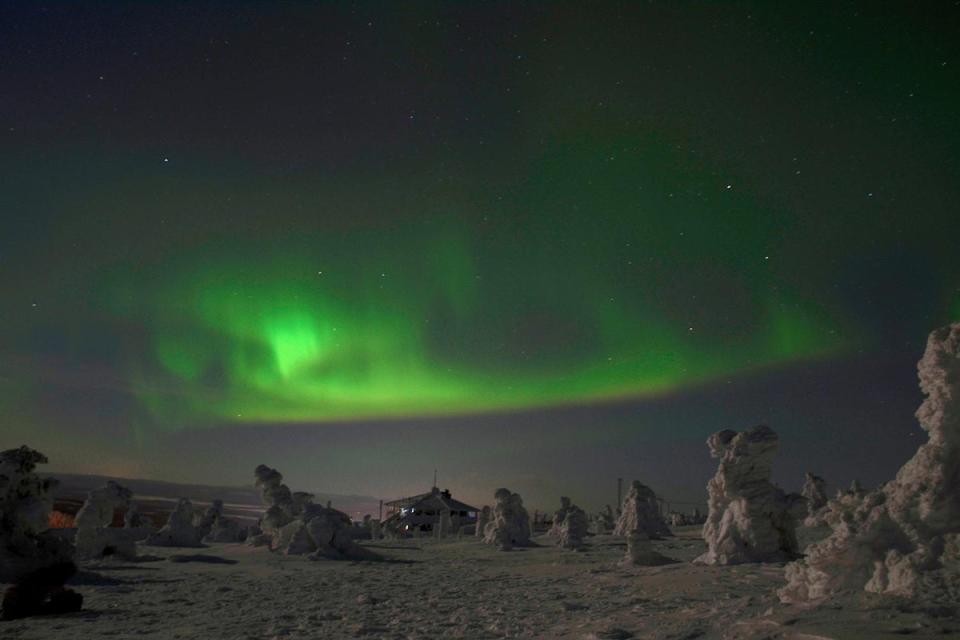
Best time to visit: between September and March.
While there’s never a guarantee you will see the Northern Lights on your trip, a visit to Finnish Lapland is your best bet. Here, the aurora borealis dance across the night sky 200 nights of the year – or at least every other night when the skies are clear.
Traditional ways to see the lights in Lapland are snowshoeing, cross-country skiing, a sled dog tour or by snowmobile. A number of luxe purpose-built glass igloos and luxury suites have also been built for visitors to experience the lights from the warmth and comfort of their beds.
Our pick is the Northern Lights Ranch near the Levi Ski Resort and just 30 kilometres from Kittilä airport. These luxury cabins have glass roofs and windows and come with a sauna and outdoor Jacuzzi for when you want to take the chill off while watching nature’s spectacular show.
To find out more, visit visitfinland.com/
Jokulsarlon, Iceland
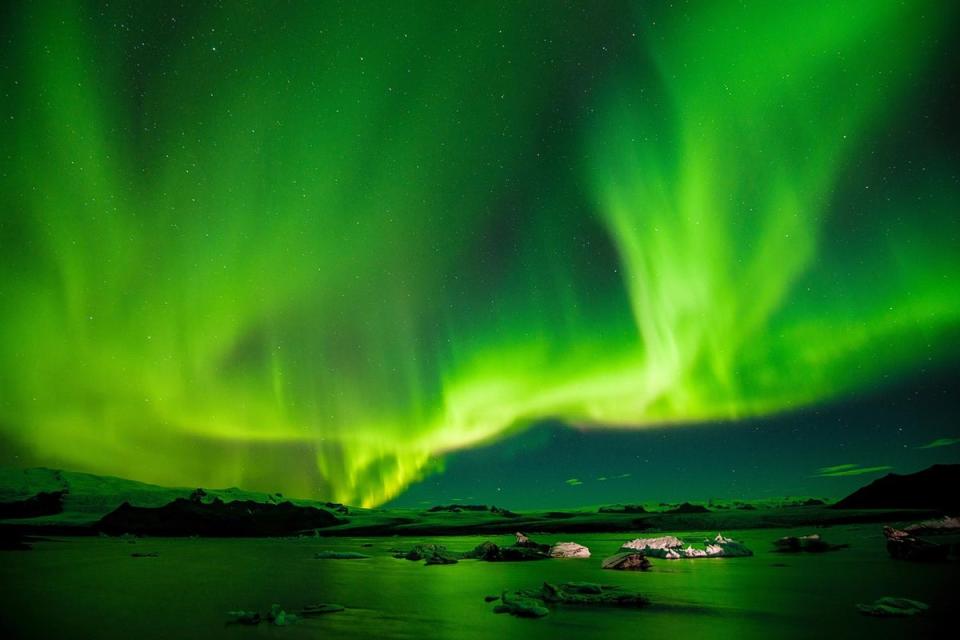
Best time to visit: between September and March.
Jokulsarlon is a lake along Iceland’s southern coastline and a picture perfect setting for watching the Northern Lights. Away from Iceland’s (very minimal) light pollution, nature’s dancers will be seen performing across the sky and reflected off the lake to create a stunning spectacle.
Iceland is cheap and accessible to get to from the UK, making it an ideal destination to see aurora borealis in all of its glory. Whether you’re doing a road trip around their famed Ring Road or staying a few nights in Reykjavik, Iceland’s winter months are the ideal time to go for aurora borealis-spotting. However, as rain and snow are common during those Icelandic winter months, you will need to be sure to check the weather accordingly to avoid any disappointments.
Besides Jokulsarlon and Reykjavik, the Northern Lights can be seen from a number of vantage points across the country - above the Skógafoss falls or even as you bathe in their famous geothermal Blue Lagoon.
To find out more, visit inspiredbyiceland.com/
Edinburgh, Scotland
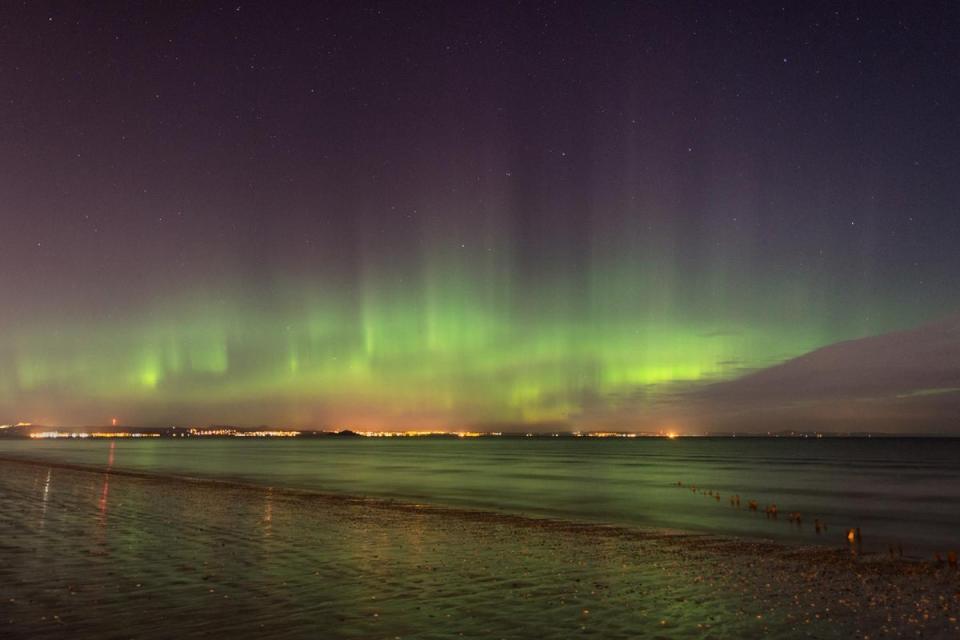
Best time to visit: between October and February.
For a budget-friendly Northern Lights viewing experience, head across the border to our northern neighbours. While the northern isles like the Isle of Lewis offer a spectacular show, the aurora borealis – or ‘Mirrie Dancers’ as they’re known in Scotland - can oftentimes be seen from the outskirts of Edinburgh, meaning you don’t have to travel far to see some stunning sights.
The lights begin to rear their head in autumn and winter when the nights are cold and the sky clear of clouds. If you can, head to the northern reaches to increase your chances of seeing the lights, where the light pollution is minimum or, alternatively, you can see them along the Moray Coast, in Galloway Forest Park, in The Cairngorms or, sometimes, in Arthur’s Seat in the wee hours of the morning.
To find out more, visit visitscotland.com/
Yukon, Canada

Best time to visit: between late August to mid-April.
The Yukon province of Canada is located on the north-western tip – right next to Alaska – and is renowned as the best place in Canada to catch a glimpse of the Northern Lights. The lights can be viewed all the way from mid-August to mid-April, meaning autumn is a great time to visit the area – as the gold and red autumn leaves will be vibrant during the day and the mesmerising ribbons of light will be active at night.
If visiting in the winter, there are a number of tour operators in Yukon and you can stay in cosy cabins, lodges or even sink into a hot tub to watch the lights. During the day you can go on dog sleds and snowmobiles - plus many operators rent or provide warm outerwear for their aurora tours meaning you don’t have to buy a whole new kit.
To find out more, visit travelyukon.com/
Fairbanks, Alaska
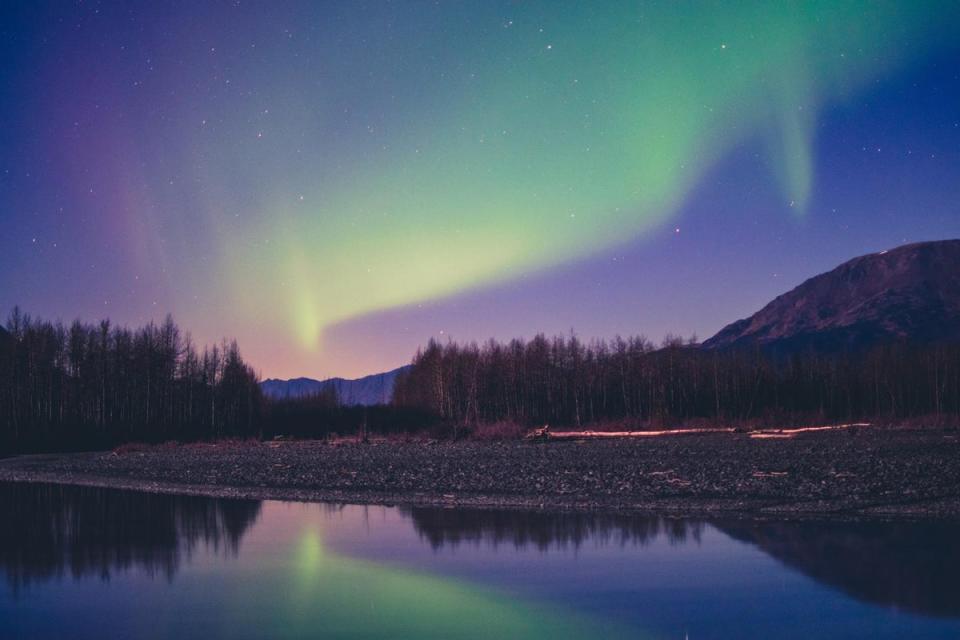
Best time to visit: between September and mid-April.
Right next to Yukon, you will find the northernmost American state of Alaska. And while there are a number of places across Alaska where you can see aurora borealis, Fairbanks is your best bet. Geographically located underneath the ‘aurora oval’, Fairbanks is where auroras are seen most frequently in Alaska – but if you’re staying in Anchorage all you need to do is take a day trip north to the town.
For something even more remote, the Iniakuk Wilderness Lodge is 200 miles north of Fairbanks and 60 miles north of the Arctic Circle and is an all-inclusive lodge where you can spend your days dog sledding and nights looking at the skies.
To find out more, visit alaska.org/
Abisko, Sweden
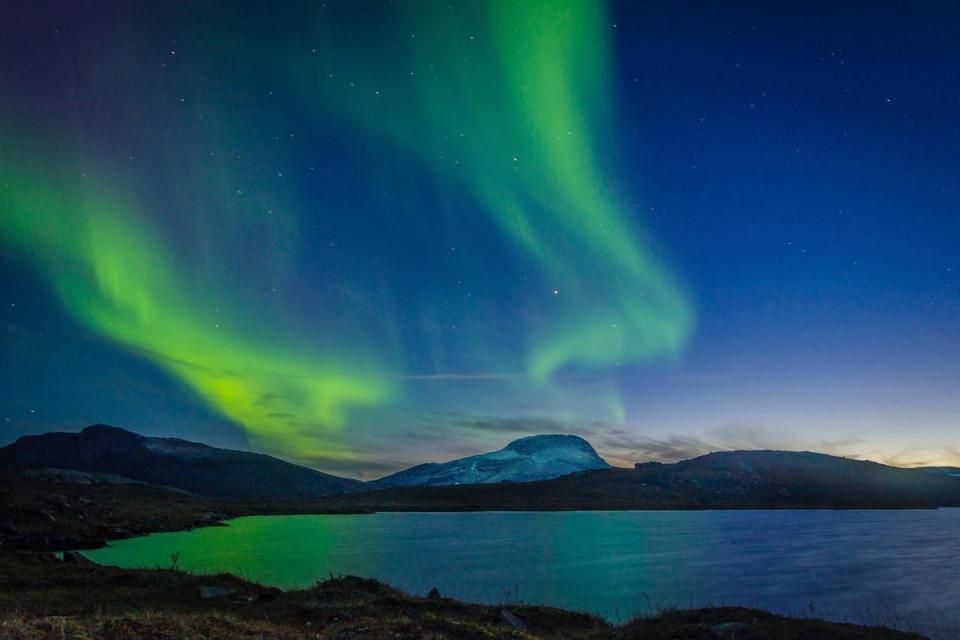
Best time to visit: between November to the end of March.
In Swedish Lapland, the Northern Lights begin to appear at the beginning of September, but the best time to go is between November and March. Abisko is a small village in Sweden, located north of the Arctic Circle. For your best chance of seeing the lights, visit the Aurora Sky Station in Abisko National Park, which is surrounded by mountains and generally clear skies.
During the day, experience the beautiful mountains and lake Torneträsk, or visit a reindeer farm, go skiing or experience a snowmobile tour. The famous ICEHOTEL is also located close by and worth a night’s stay in a room made completely of ice.
To find out more, visit visitsweden.com/
Tromsø, Norway
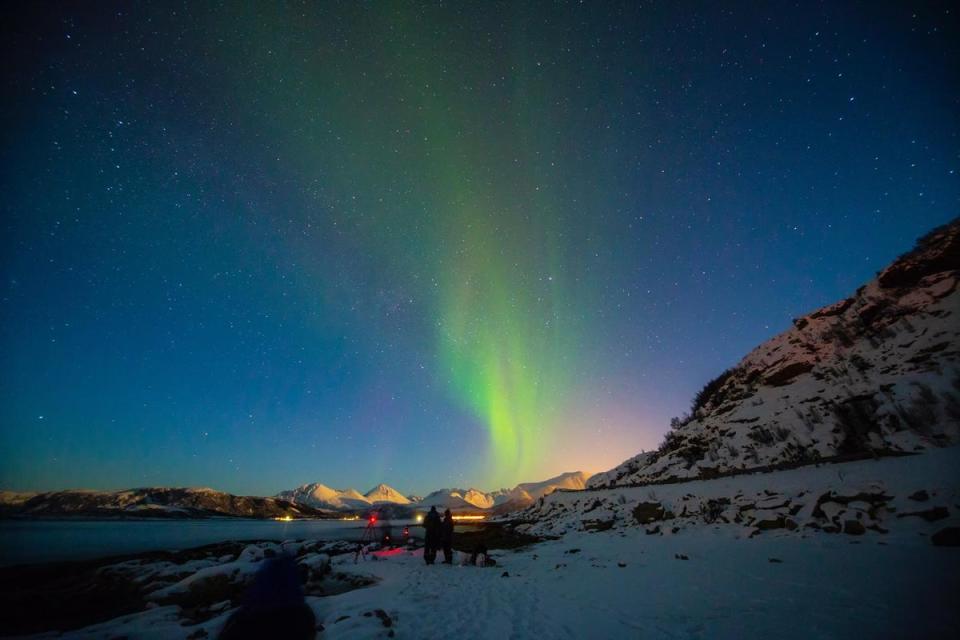
Best time to visit: between September and April.
Tromsø is one of the biggest city hubs in the Arctic Circle and from mid-November to mid-January, they experience a phenomenon called ‘Polar Night’. This is when the sun does not rise above the horizon at all, meaning both days and nights offer dark skies. For northern light chasers, however, this is the prime time for favourable aurora borealis observation.
Yet, even during Polar Night there are a few hours of daylight each day, meaning you can explore Tromsø’s surrounding fjords, mountain peaks and islands.
To find out more, visit visittromso.no/
Lake Tekapo, New Zealand
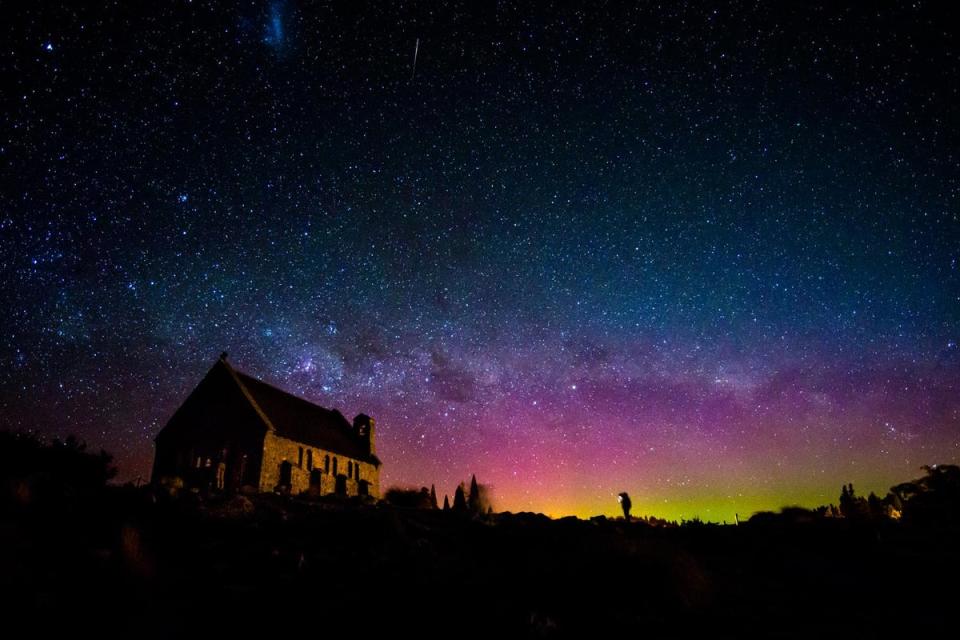
Best time to visit: between March and September (New Zealand’s winter).
While the northern hemisphere has the aurora borealis, the southern hemisphere has the aurora australis – sheets of green, gold, yellow and blue lighting up the sky. The aurora australis can be viewed from the island of Tasmania, just south of Australia and in the southern reaches of New Zealand’s south island and Stewart Island.
Lake Tekapo is located in the southern part of New Zealand’s south island and is home to a UNESCO starlight reserve. This means that light pollution is strictly controlled and includes some of the most stunning landscapes in New Zealand – including Aoraki Mount Cook and the turquoise lakes of that region. At night, you can spot the Southern Cross, the Megellanic Clouds, the Milky Way and, if you’re lucky, during the winter months you can also see aurora australis during crisp, clear, winter nights.
To find out more, visit newzealand.com/


